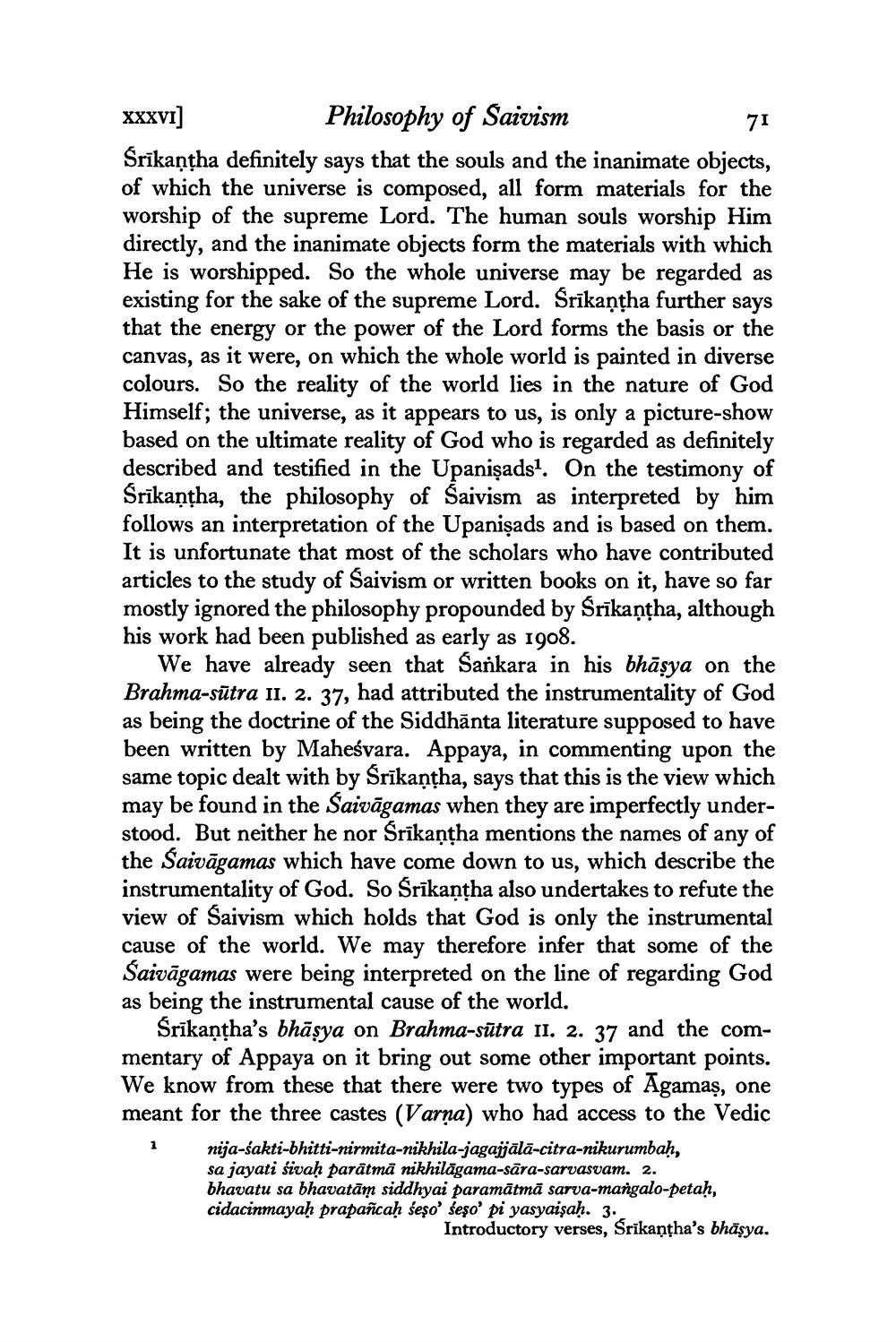________________
71
XXXVI]
Philosophy of Saivism Śrīkaņķha definitely says that the souls and the inanimate objects, of which the universe is composed, all form materials for the worship of the supreme Lord. The human souls worship Him directly, and the inanimate objects form the materials with which He is worshipped. So the whole universe may be regarded as existing for the sake of the supreme Lord. Śrīkantha further says that the energy or the power of the Lord forms the basis or the canvas, as it were, on which the whole world is painted in diverse colours. So the reality of the world lies in the nature of God Himself; the universe, as it appears to us, is only a picture-show based on the ultimate reality of God who is regarded as definitely described and testified in the Upanişads1. On the testimony of Śrīkantha, the philosophy of Saivism as interpreted by him follows an interpretation of the Upanişads and is based on them. It is unfortunate that most of the scholars who have contributed articles to the study of Saivism or written books on it, have so far mostly ignored the philosophy propounded by Srīkaņķha, although his work had been published as early as 1908.
We have already seen that Sankara in his bhāsya on the Brahma-sūtra II. 2. 37, had attributed the instrumentality of God as being the doctrine of the Siddhānta literature supposed to have been written by Maheśvara. Appaya, in commenting upon the same topic dealt with by Srīkantha, says that this is the view which may be found in the Saivāgamas when they are imperfectly understood. But neither he nor Srikantha mentions the names of any of the Saivāgamas which have come down to us, which describe the instrumentality of God. So Srikantha also undertakes to refute the view of Saivism which holds that God is only the instrumental cause of the world. We may therefore infer that some of the Saivāgamas were being interpreted on the line of regarding God as being the instrumental cause of the world.
Śrīkantha's bhāsya on Brahma-sūtra 11. 2. 37 and the commentary of Appaya on it bring out some other important points. We know from these that there were two types of Agamaş, one meant for the three castes (Varna) who had access to the Vedic
nija-sakti-bhitti-nirmita-nikhila-jagajjālā-citra-nikurumbaḥ, sa jayati śivah parātmā nikhilāgama-sära-sarvasvam. 2. bhavatu sa bhavatām siddhyai paramātmā sarva-mangalo-petah, cidacinmayaḥ prapañcah šeşo' seso' pi yasyaisah. 3.
Introductory verses, Srikantha's bhāsya.




